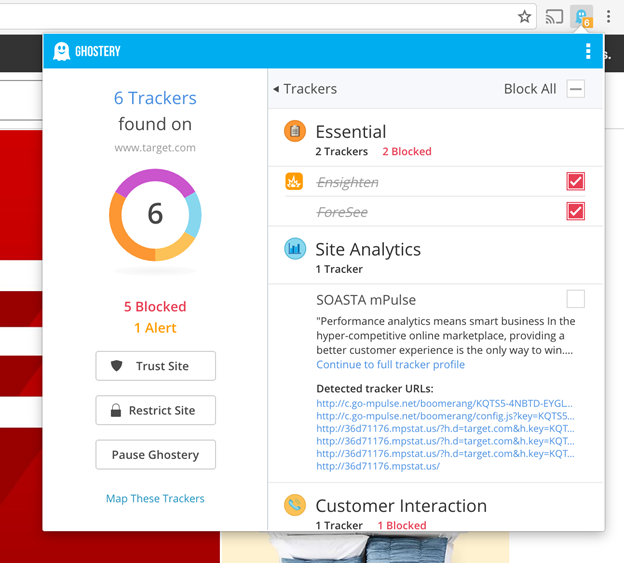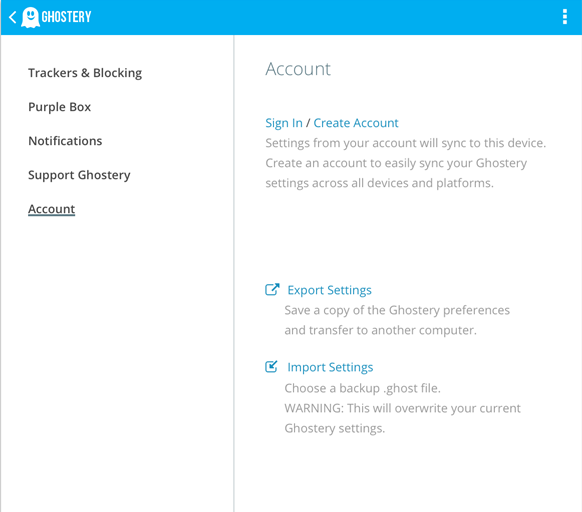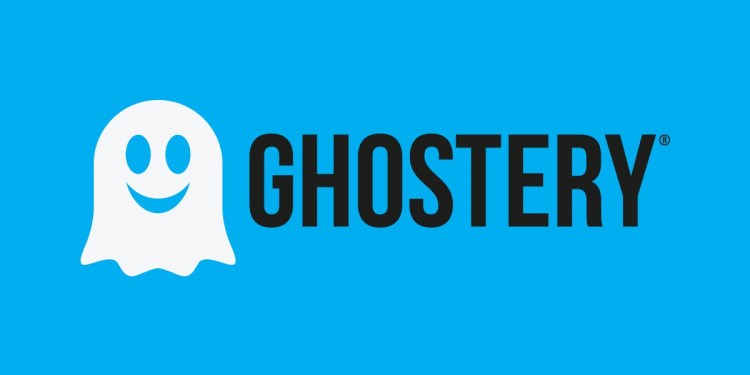Ghostery today released version 7 of its free privacy browser extension. In development for six months, this version is a complete revamp, featuring the biggest user interface overhaul in five years. You can download Ghostery 7 now for Chrome, Firefox, and Opera.
Best known for blocking tracking technologies, Ghostery lets you understand and control third-party trackers on the sites you visit. Users rely on it to figure out who is collecting their data, while developers use it to clean up and speed up their sites. In fact, about 10 percent of Ghostery users depend on the tool for work, according to Scott Meyer, Ghostery’s chief executive officer. Version 7 is unique in that it was developed thanks to feedback from the extension’s community, including months of user testing, hundreds of support emails, and thousands of survey responses.
Ghostery believes this version is both easier to understand for casual users and more feature-rich for power users. “We found that Ghostery had tons of passionate users among tech-savvy users, but we also wanted to make it more accessible to the average user,” Jeremy Tillman, Ghostery’s director of consumer product, told VentureBeat.
Here’s the official changelog for version 7:
- New dynamic panel window with expanded and collapsed views
- Redesigned/combined summary and blocking views
- Integrated settings view within panel
- Collapsible purple box with refined UI
- Restructured account views
- Added script signatures for account holders
- Panel opt-in modal for new users
- New success/error/reload callouts
- Ability to opt out of non-critical pings
- Code refactor using ES6 and Foundation 6
This list doesn’t do version 7 justice. There are three main areas worth highlighting in particular.

First and foremost, the new user interface is the first change you’ll experience. The main panel has been increased and split into two: a left-side summary pane and a right-side information pane that offers the full list of trackers. The summary panel gives a visual overview of how many trackers are in each category and lets you take page-level actions, while the collapsible information pane offers a more compact version of the extension’s classic tracker list. Ghostery’s purple box, the real-time list of trackers that populates on the lower right-hand corner of the screen, can also now be collapsed, hidden, or expanded to get additional information.

Local settings are now available directly in the extension itself, meaning users no longer have to navigate to a website to change their preferences. But users can take the customizability even further as Ghostery now lets you create an account to get more features. These include the ability to sync settings across browsers and devices, get alerts for slow and non-secure trackers (more on that below), detect URLs for each tracker, and get one free scan per month using the company’s Trackermap product, which visually maps all the tracker relationships and isolates how tags got onto a given page (check out VentureBeat’s Trackermap).
![]()
Last but definitely not least are Tracker Alerts, which give you information on how a tracker, or the blocking of a tracker, is affecting a given page. Broken page alerts (based on user submissions) let you know when Ghostery blocked a tracker that might be necessary for the website to work properly. Slow and non-secure tracker alerts (programmatic) let you know when a tracker is either slowing a site down or making a nonsecure call from a secure page. Alerts are merely informative — you still have complete control over whether to take action on them. Finally, you can submit new trackers and report broken pages with just one click.
While not technically a new feature, trackers are categorized differently in Ghostery 7. Previous versions had five categories: Advertising, Analytics, Beacons, Privacy, and Widgets. Now there are eight: Advertising, Site Analytics, Customer Interaction, Social Media, Essential, Audio/Video Player, Adult Advertising, and Comments. Meyer explained to us that the change is something users have been asking about for a long time, as the previous categories were archaic and confusing.
“We put enormous weight in the feedback we received from our community and this is reflected in the latest release,” Tillman said in a statement. “The new and exciting features: the more compact tracker list, filterable categories, alerts for broken pages, and tracker URLs, were all designed with help from our users. Bringing this ‘crowdsourced’ edition of the Ghostery Browser Extension to market shows how much we value our vibrant community of users.”
The company promises Ghostery 7 is also coming to Edge in September or October and later to Safari. Because this is such a user-driven release, Ghostery naturally wants to get your feedback now that version 7 has shipped — to let them know your thoughts, email the support team.
VentureBeat's mission is to be a digital town square for technical decision-makers to gain knowledge about transformative enterprise technology and transact. Learn More

